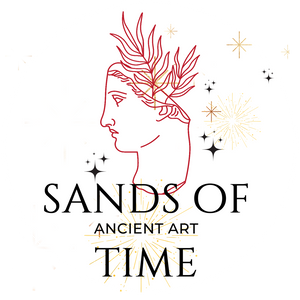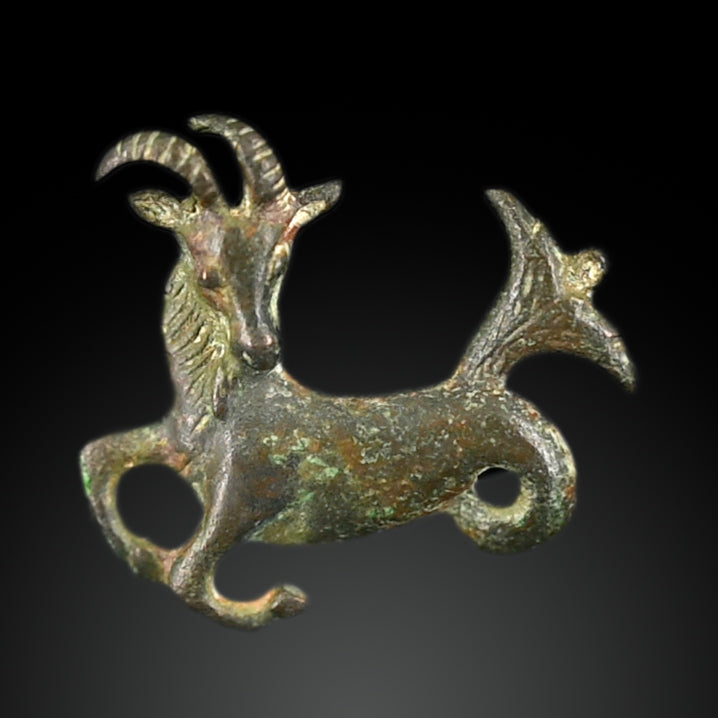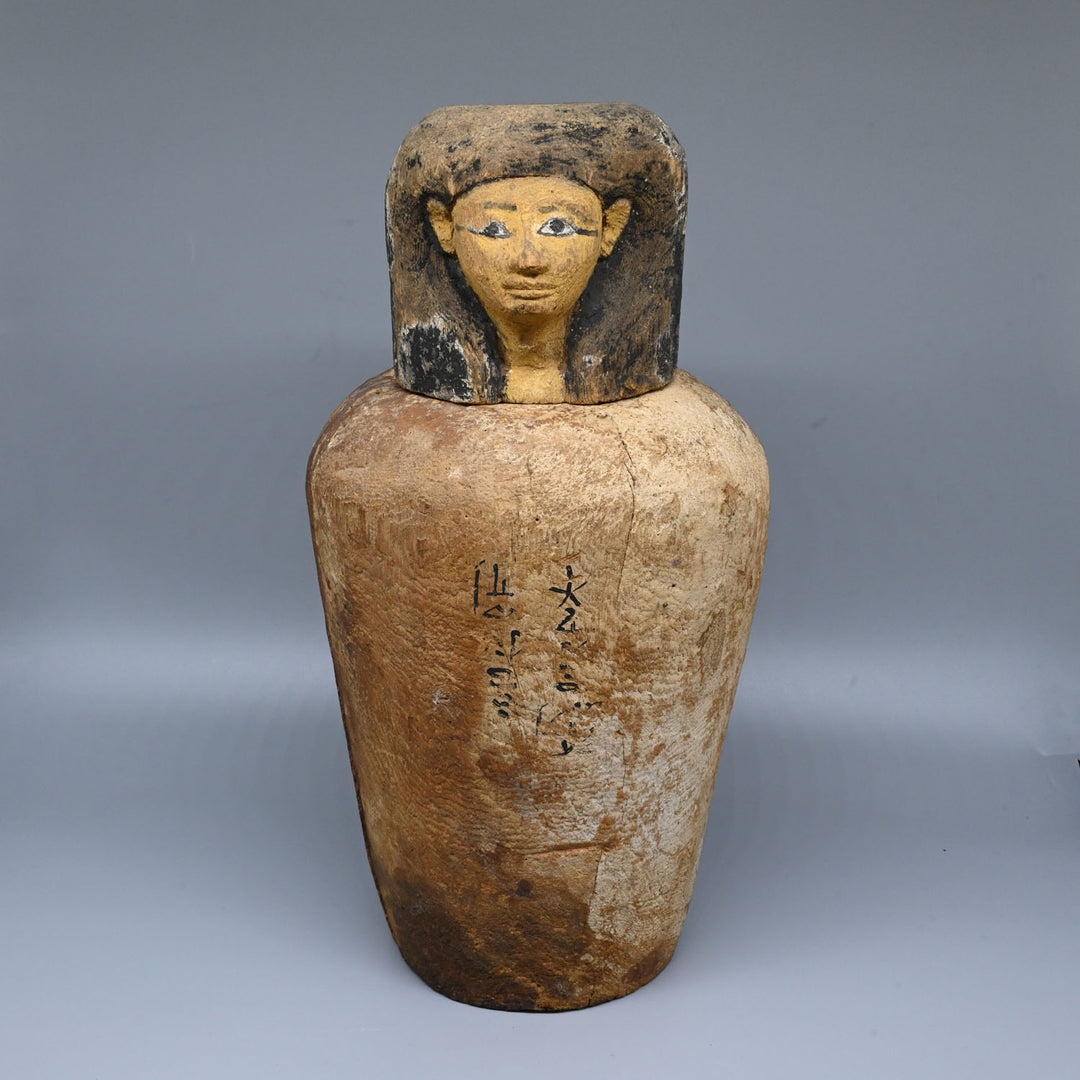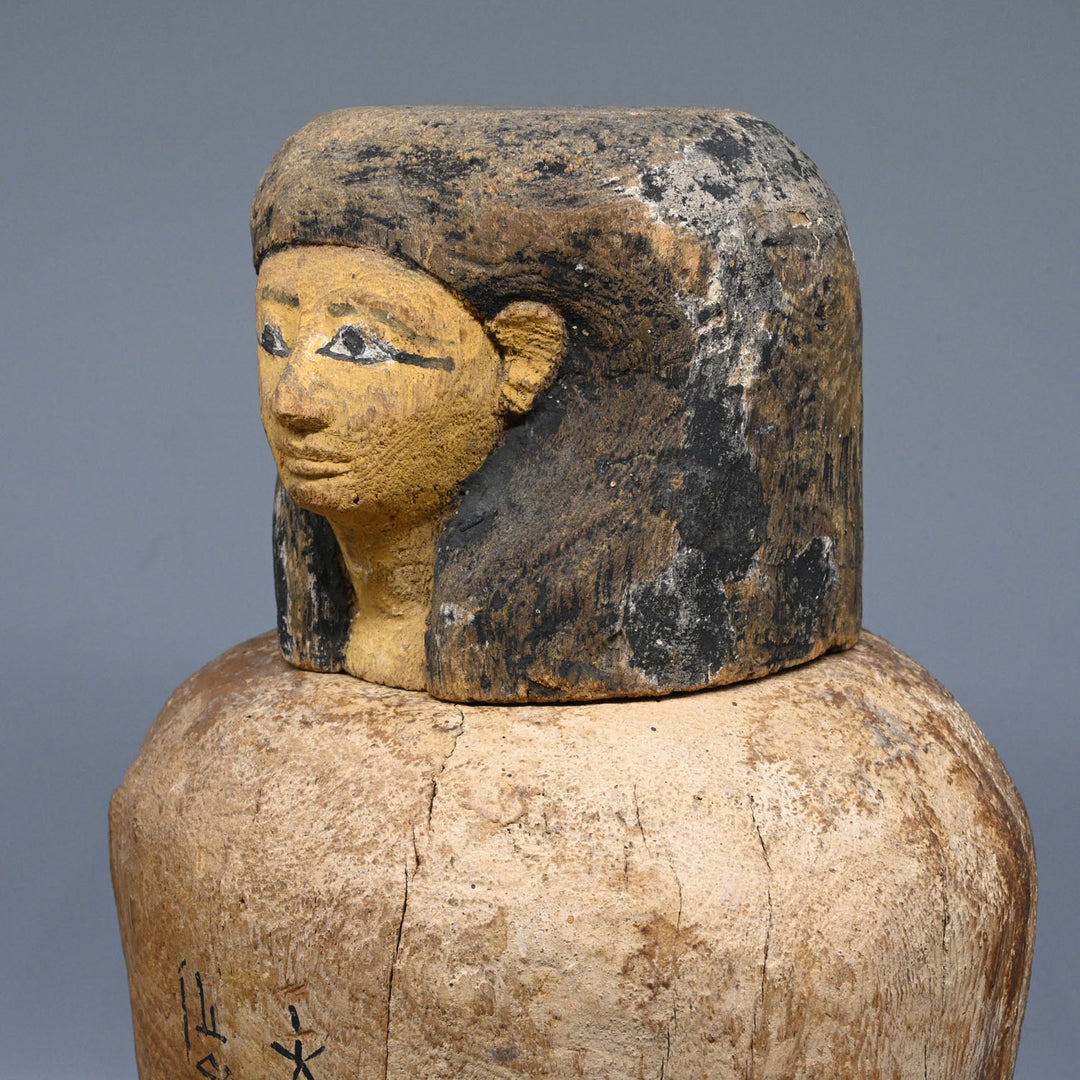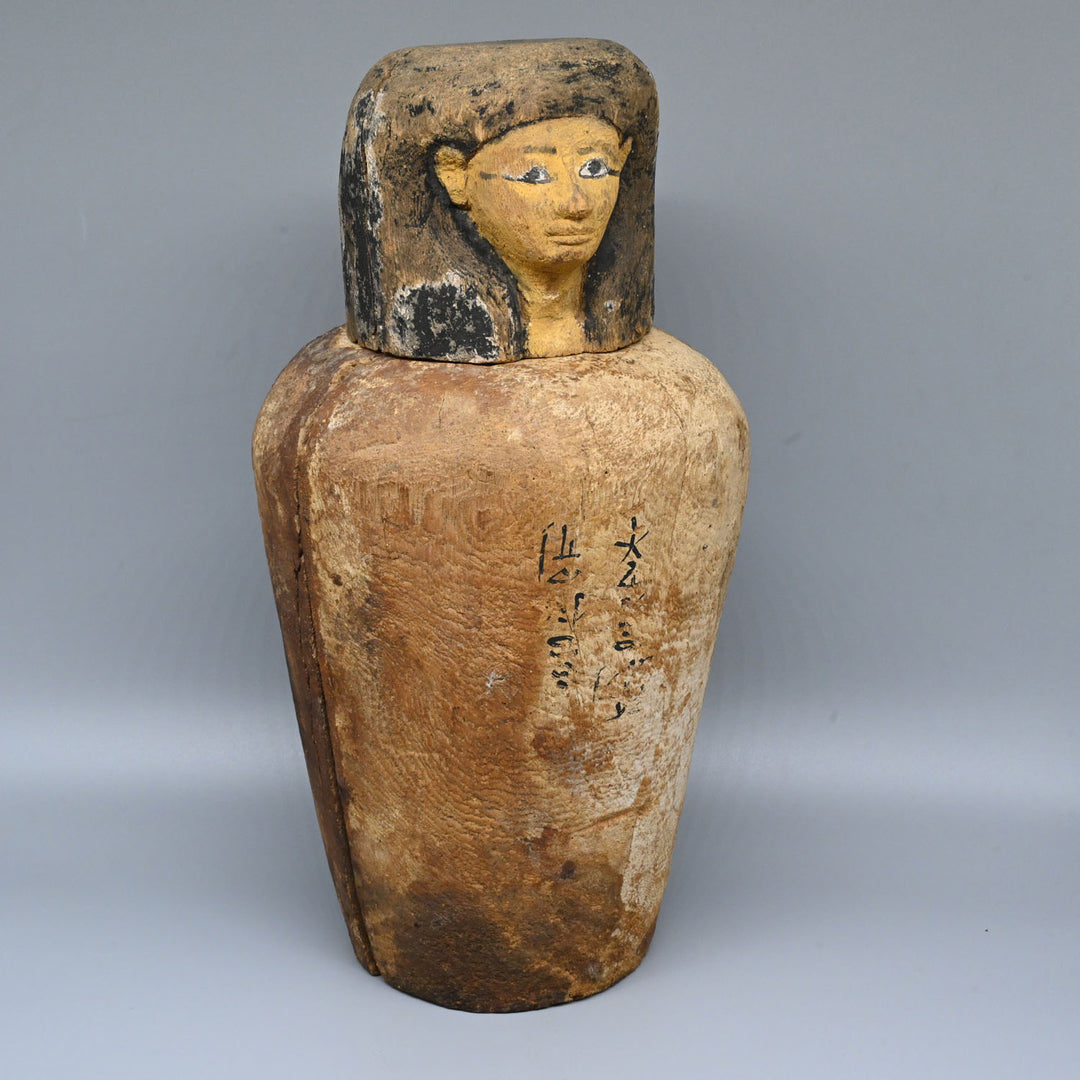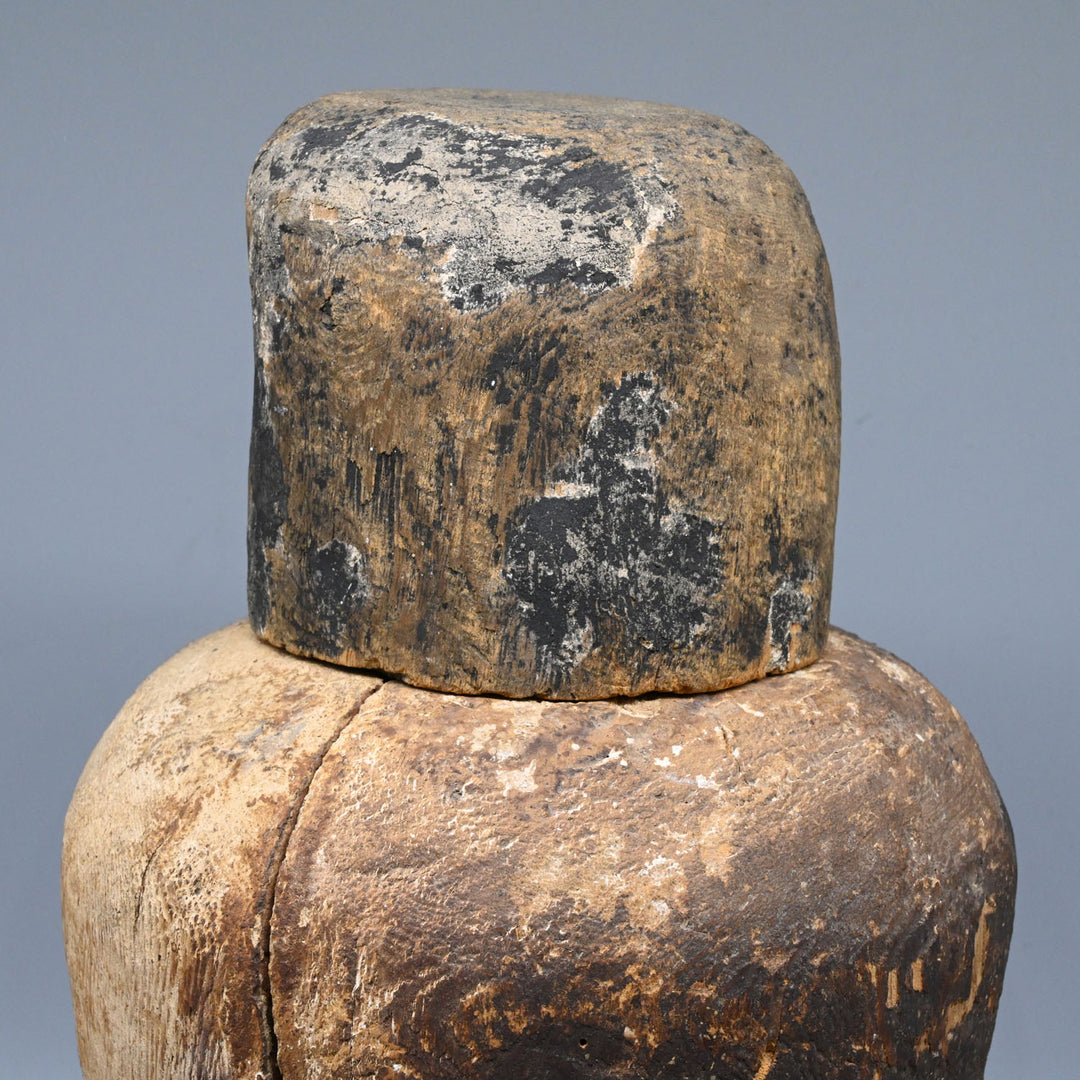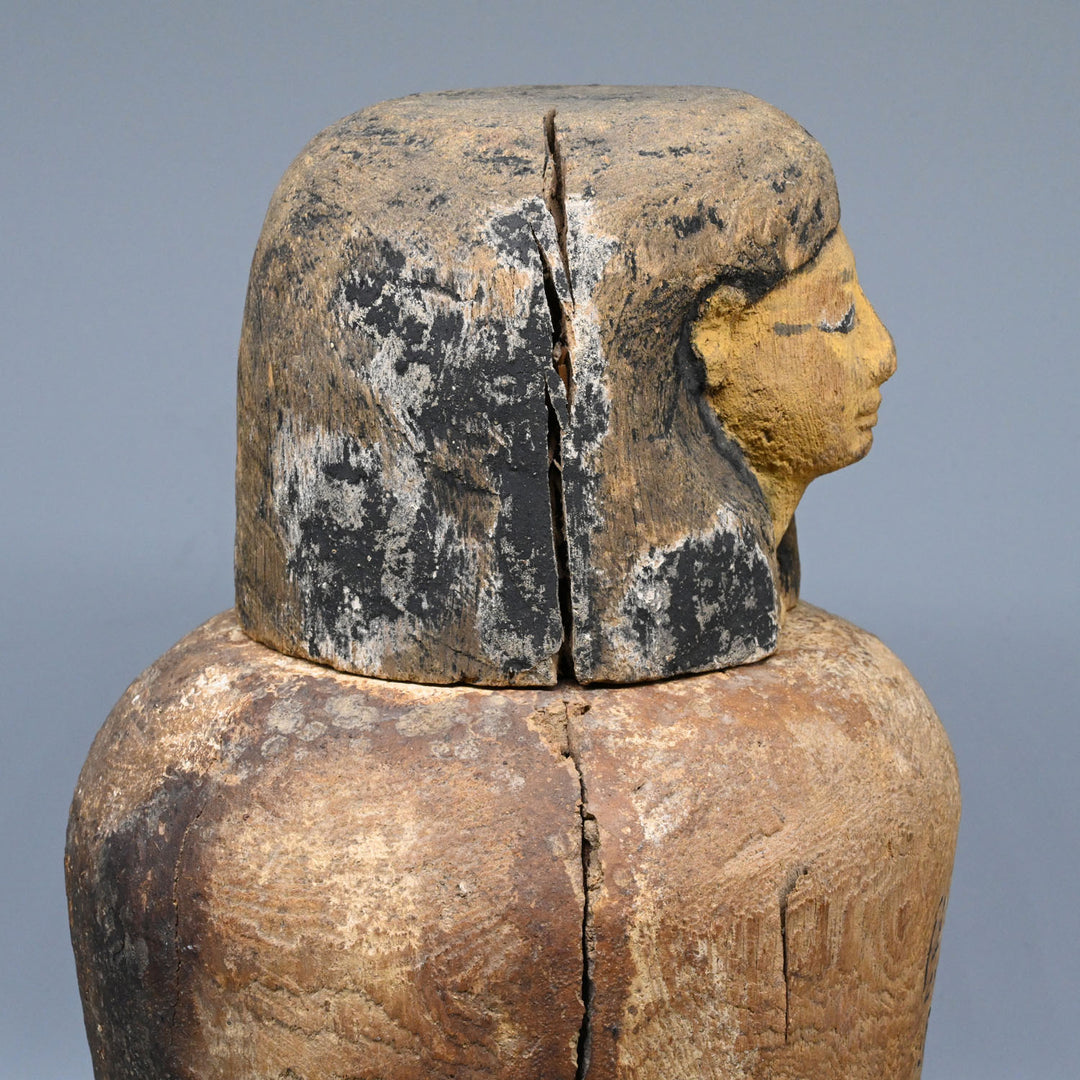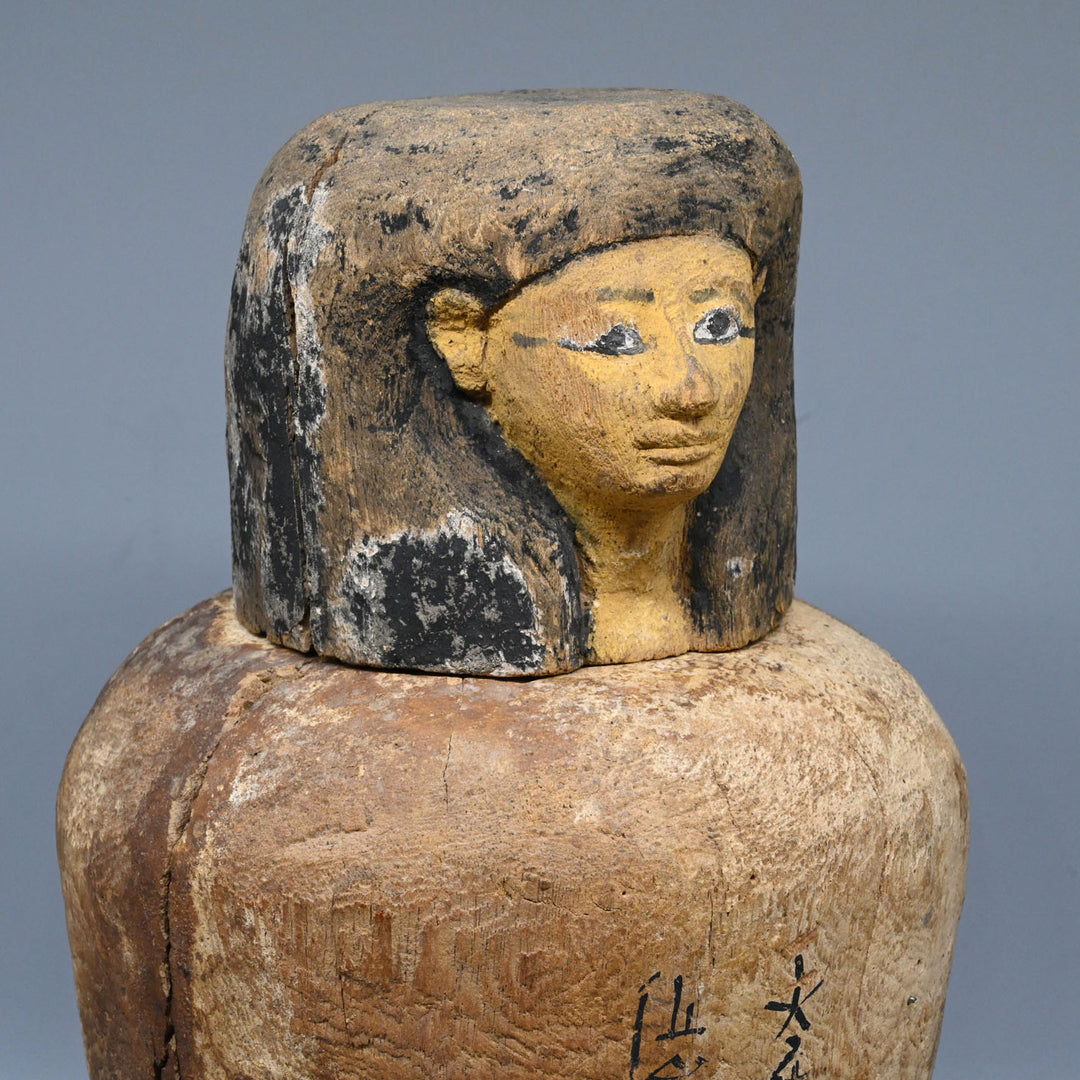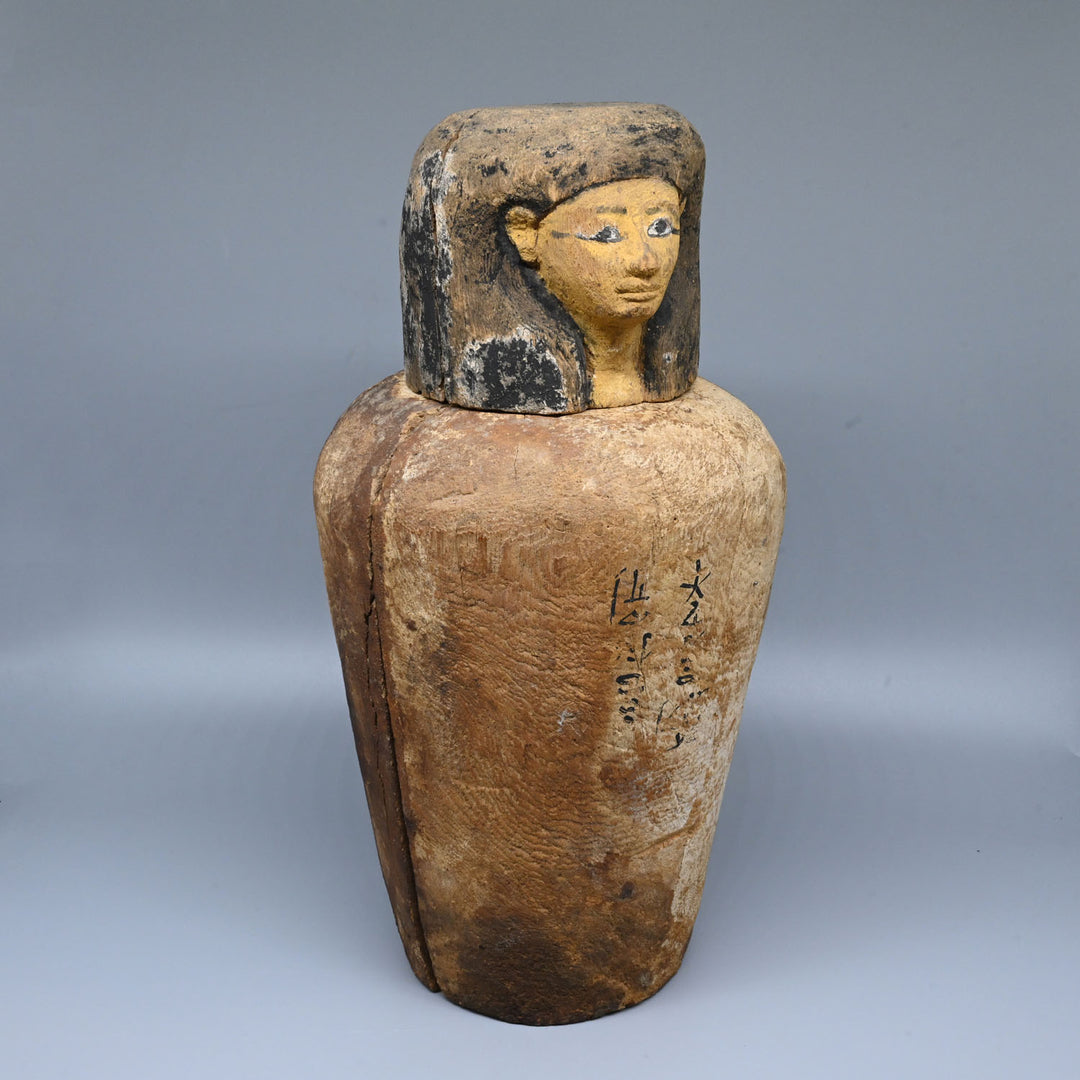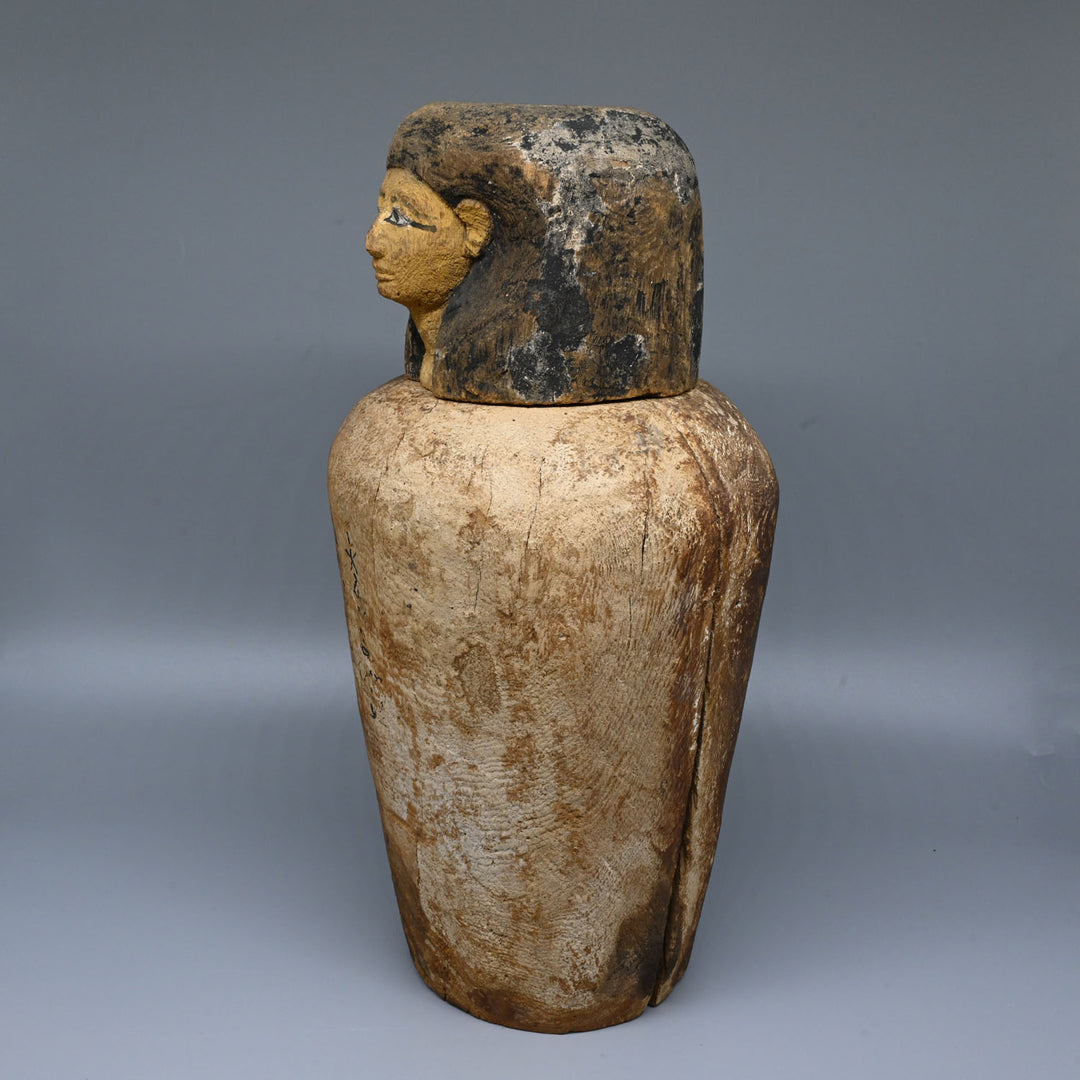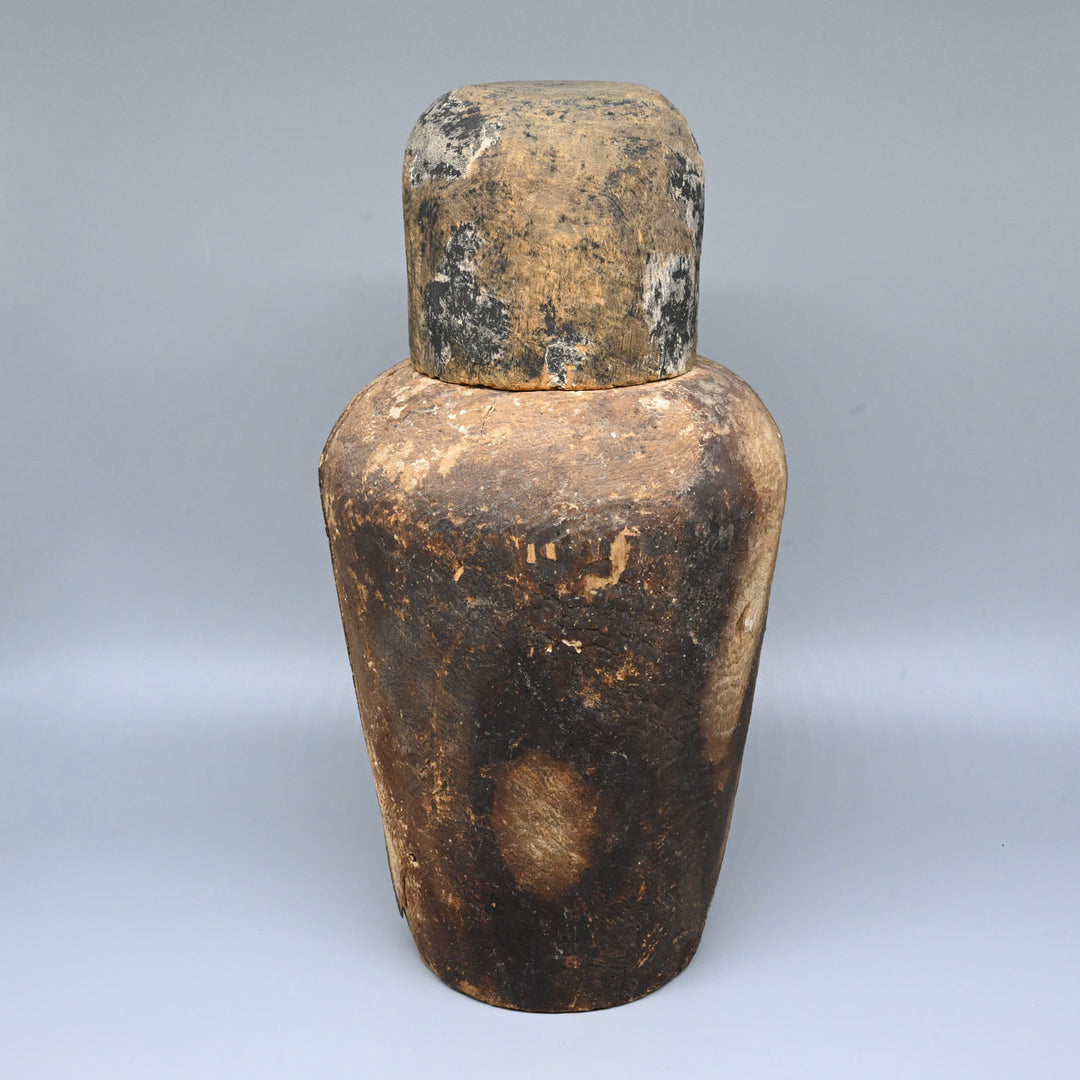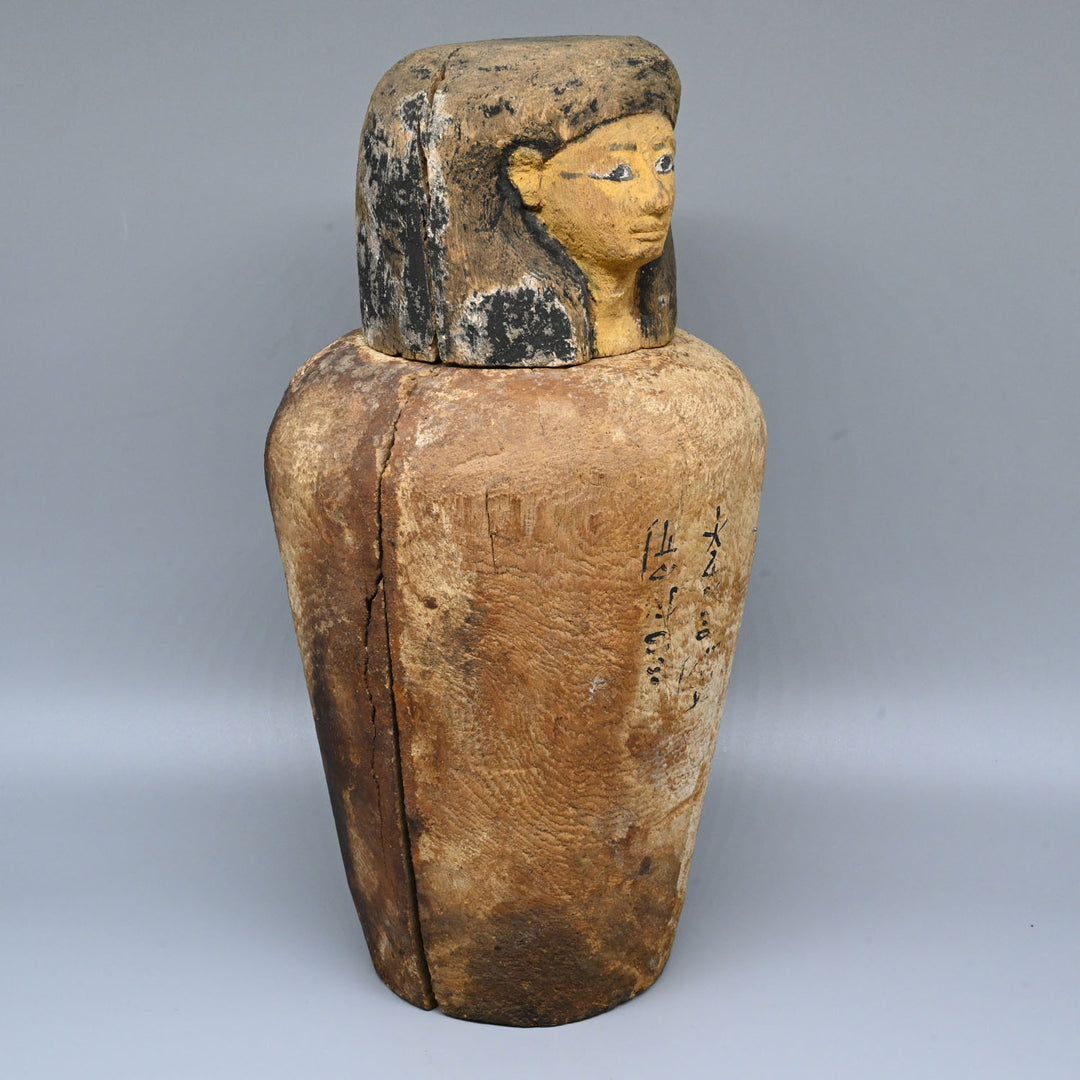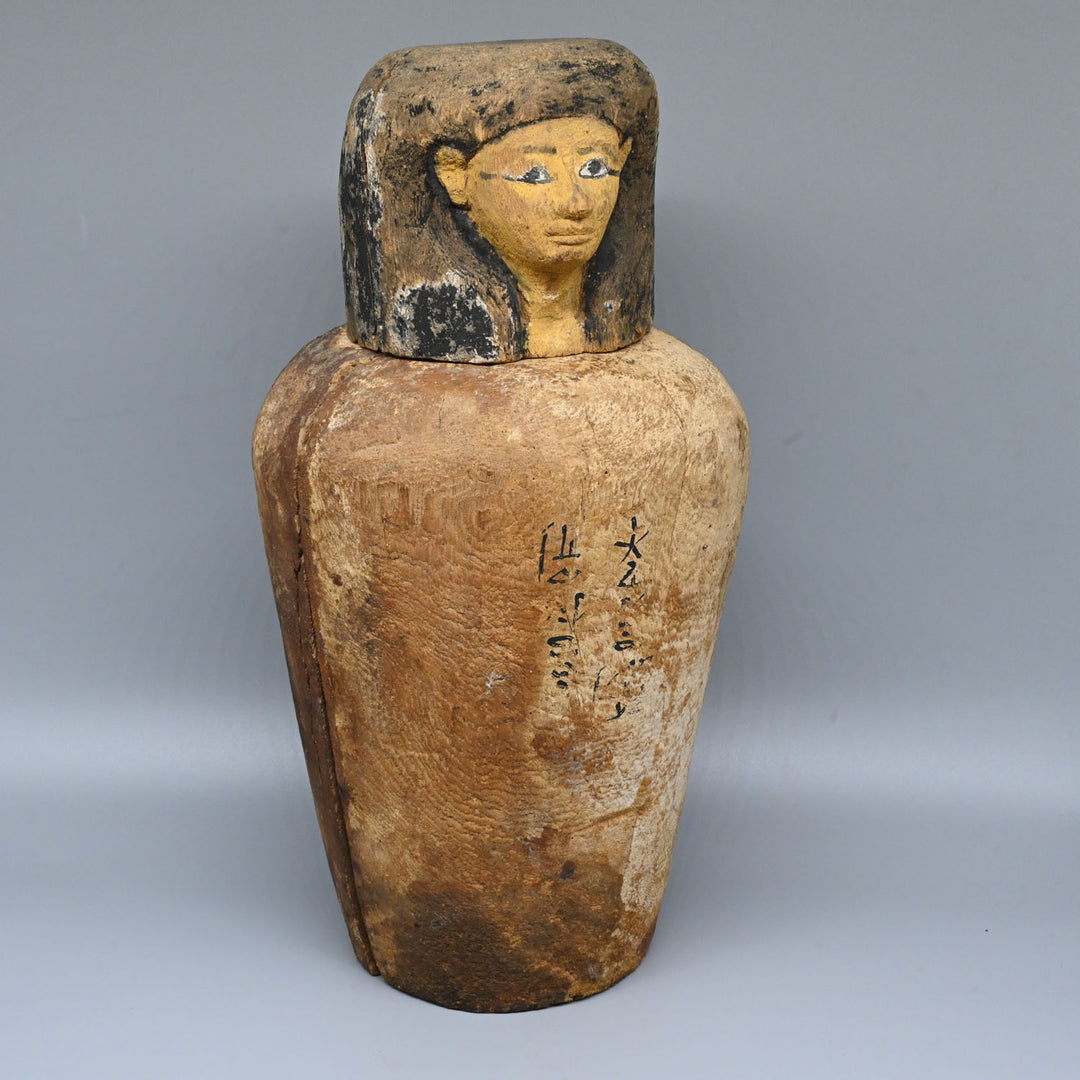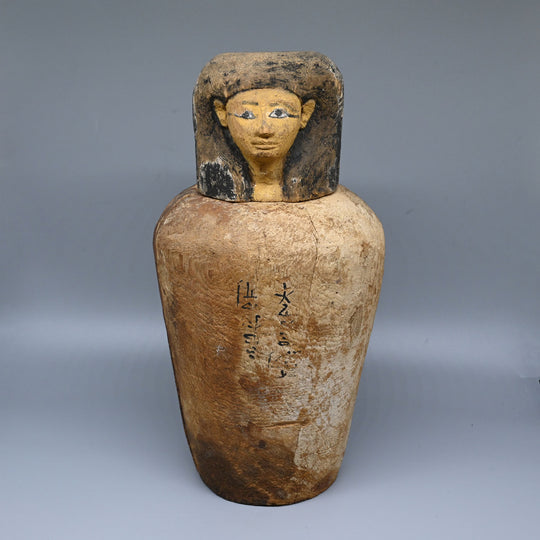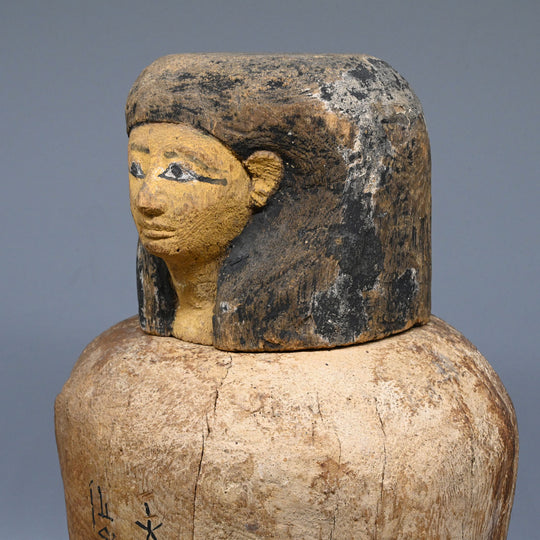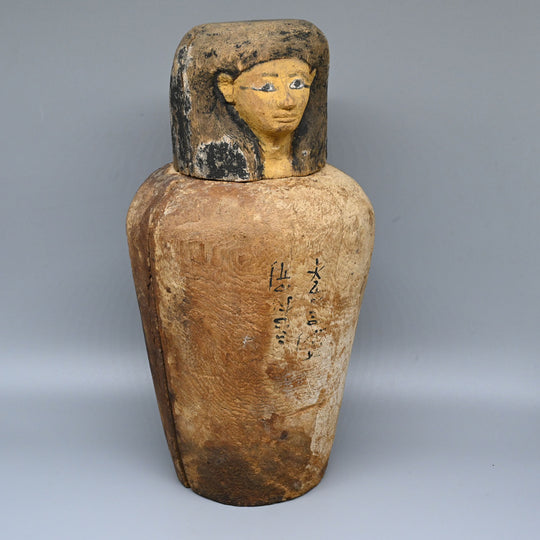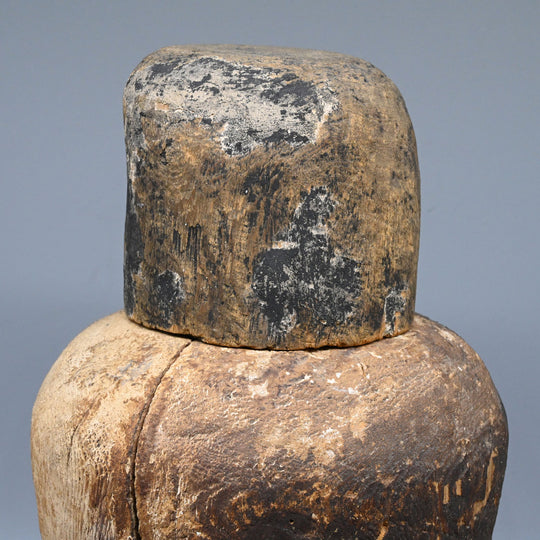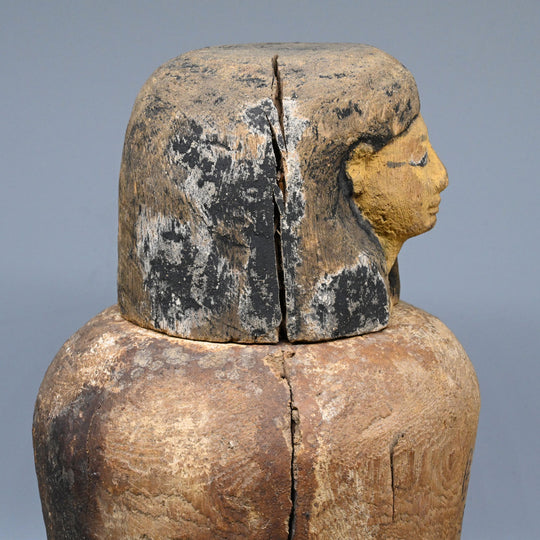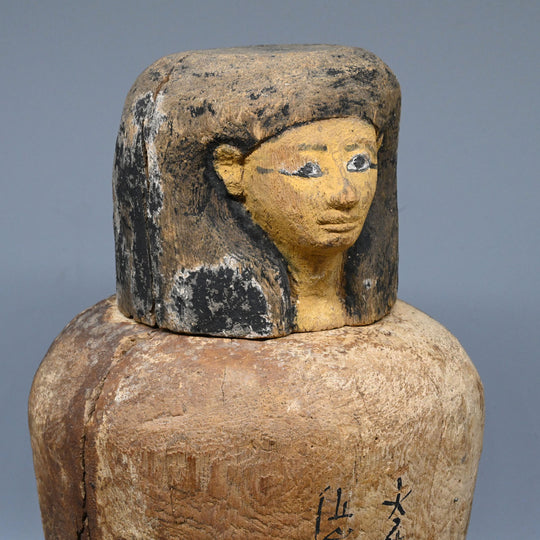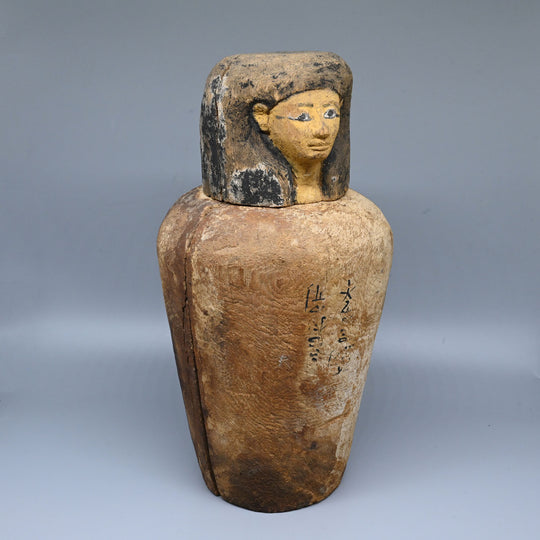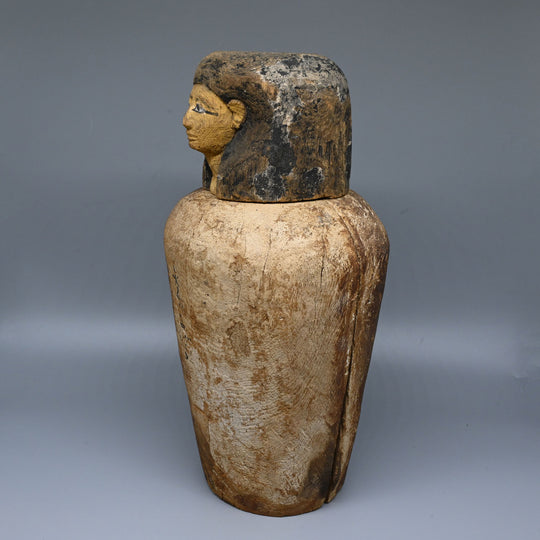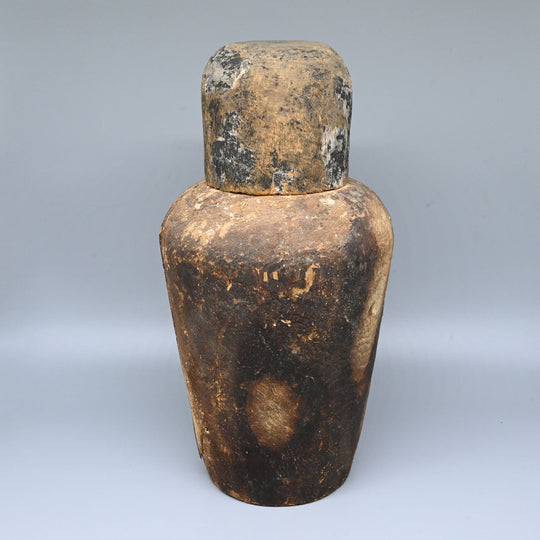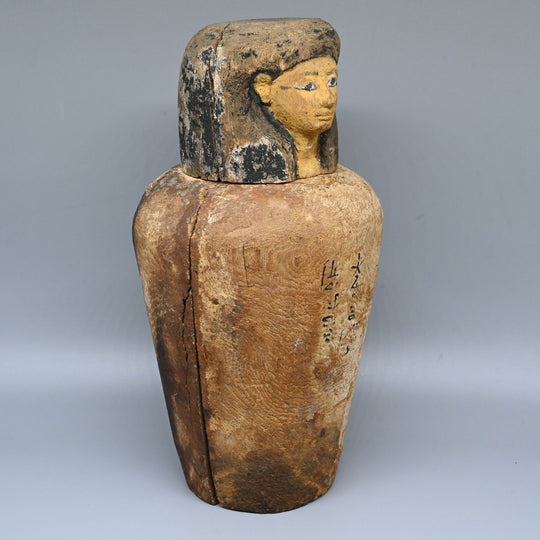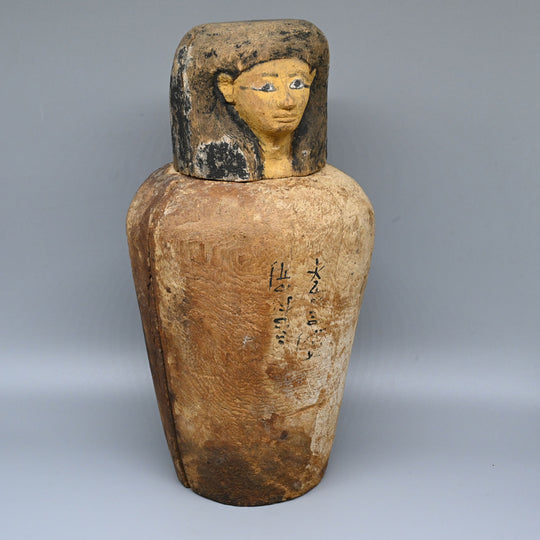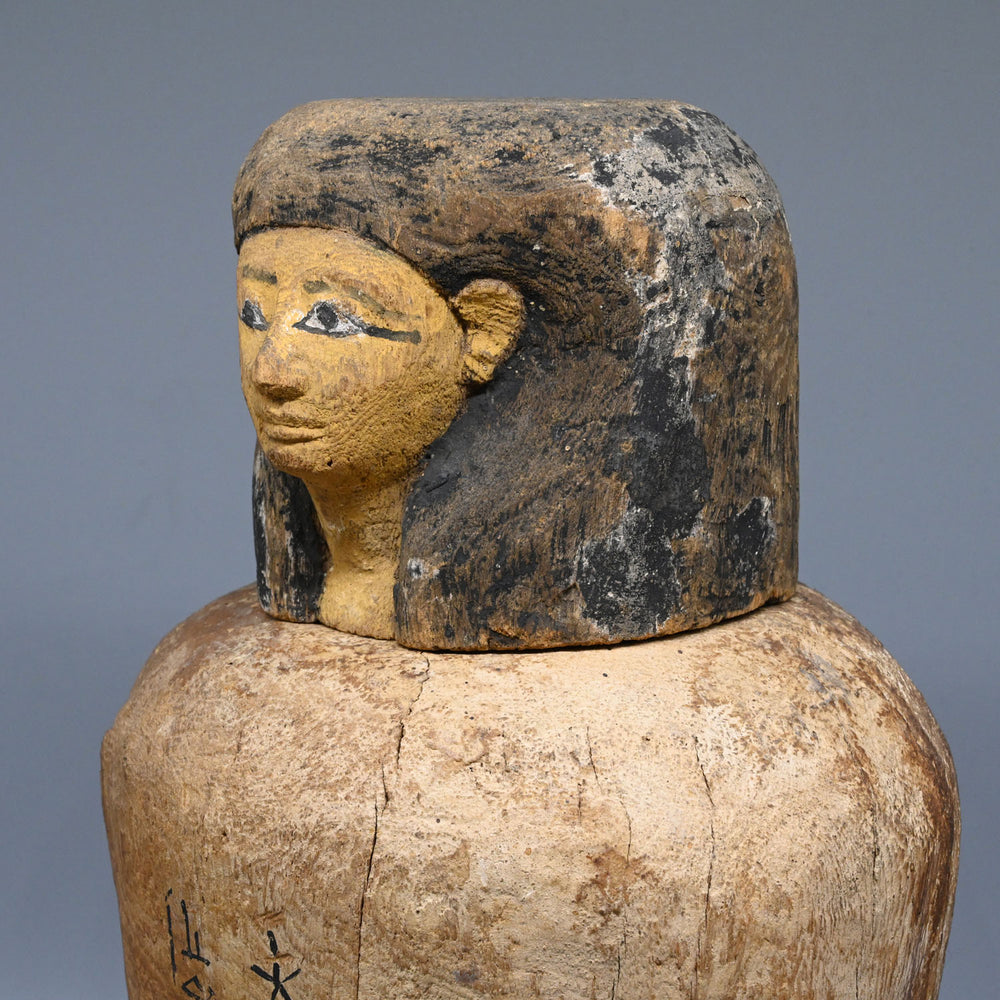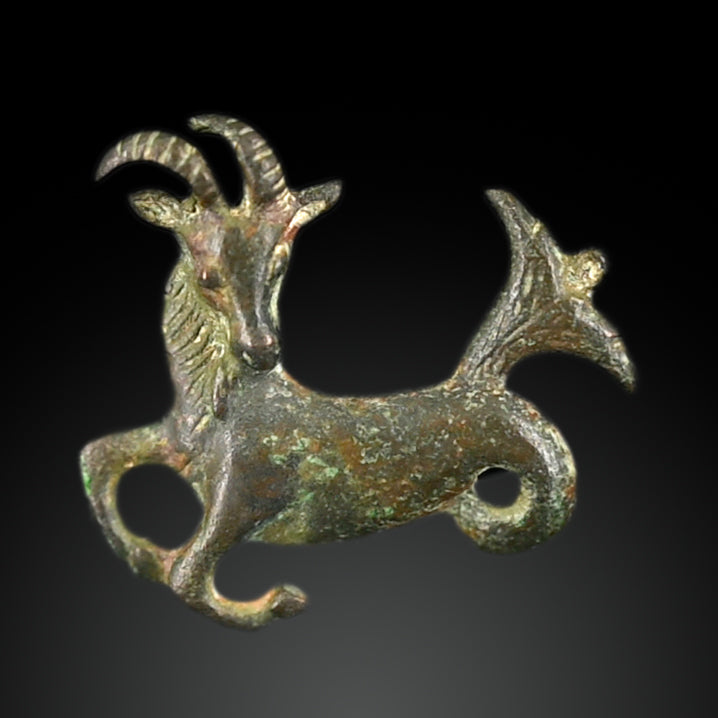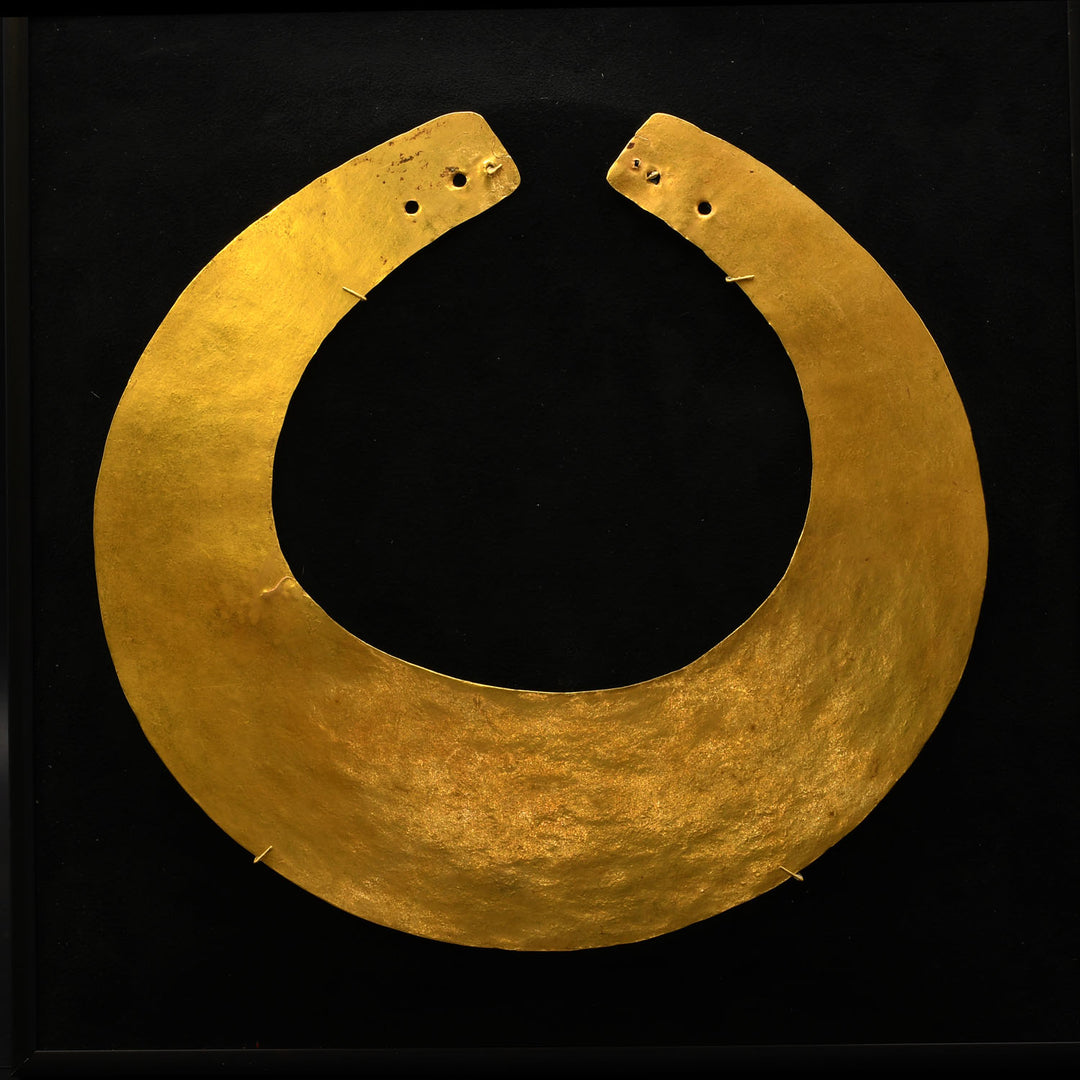This wooden Middle Kingdom canopic jar belongs to a set of four used to contain the organs of the body, considered the most important, removed from the body during mummification. Constructed in two parts and painted white, the jar itself displays the classic canopic form, full and round at the shoulder of the vessel, then tapering down towards the base. It is painted with a rectangular panel of inscribed hieroglyphs in two vertical columns naming the god as Duamutef, one of the four sons of Horus, and the owner partially as "---renef".
During the earlier periods, canopic jars had simple disc-shaped or hemispherical lids. In the late First Intermediate Period to early Middle Kingdom, however, lids in the form of human heads were introduced, as seen in this example. It is shown wearing a black wig, with ears displayed, the finely featured face, painted in pale yellow ochre to represent gold, features large eyes, painted pupils and eyebrows, and a slight smile to the lips. Canopic jars were vessels used for the burial of the wrapped viscera removed from the body of the deceased during mummification.
Each canopic jar held a particular organ and was under the special protection of one of the four Sons of Horus deities. Each of the four gods were associated with a particular canopic vessel and its contents, was protected by one of the four "protective" goddesses, and allied with one of the four cardinal points of the compass. Hapi, the baboon and guardian of the North, protected the lungs and was associated with the goddess Nephthys. Duamutef, the jackal and guardian of the East, protected the stomach and was associated with Neith. Imsety, with a human face was the guardian of the South, protected the liver and was associated with Isis. Qubehsenuef, the falcon and guardian of the West, presided over the intestines and was associated with Selkis.
For a similar example in the Museum of Fine Arts, Boston, see pp. 190-191, cat. no. 137, in D'Auria, et al., "Mummies and Magic, The Funerary Arts of Ancient Egypt.",
For similar stoppers, see the canopic jars of Nakht-Ankh in A.R. David, The Two Brothers: Death and Afterlife in Middle Kingdom Egypt, BC, 2007, p. 53, no. 35, and the wooden canopic stoppers from the 12th Dynasty canopic chest of Gua in the British Museum, London, acc. no. EA30838.
Medium: Wood, polychrome.
Dimensions: Height: 15 inches (38 cm)
Condition: The jar is constructed in two parts, with ancient dowels joining the two parts along the side. There is good remains of the original white pigment to the jar and the inscription is worn and partially readable. The lid has minor losses with a crack to the right side that does not detract. Overall the jar is intact and in very good condition for this age and type. A lovely example.
Provenance: Private collection of French Egyptologist, Alexander Varielle (1909 - 1951), thereafter sold anonymously through Pierre Berge, Paris, June 17, 2010, to a private Virginia collector, Bonhams London, July 3, 2019.
